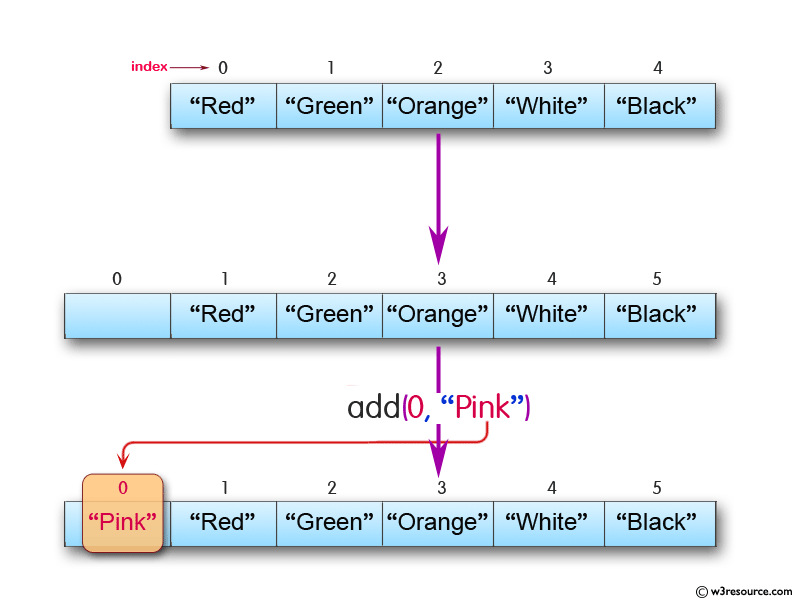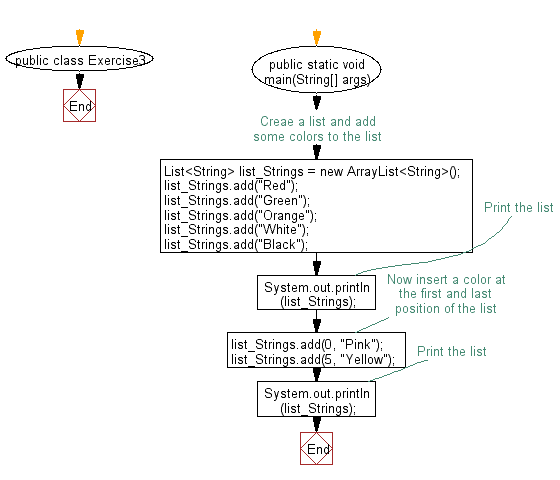Java: Insert an element into the array list at the first position
3. Insert at First Position
Write a Java program to insert an element into the array list at the first position.
Pictorial Presentation:

Sample Solution:-
Java Code:
import java.util.*;
public class Exercise3 {
public static void main(String[] args) {
// Creae a list and add some colors to the list
List<String> list_Strings = new ArrayList<String>();
list_Strings.add("Red");
list_Strings.add("Green");
list_Strings.add("Orange");
list_Strings.add("White");
list_Strings.add("Black");
// Print the list
System.out.println(list_Strings);
// Now insert a color at the first and last position of the list
list_Strings.add(0, "Pink");
list_Strings.add(5, "Yellow");
// Print the list
System.out.println(list_Strings);
}
}
Sample Output:
Note: Exercise3.java uses unchecked or unsafe operations. Note: Recompile with -Xlint:unchecked for details. [Red, Green, Orange, White, Black] [Pink, Red, Green, Orange, White, Yellow, Black]
Flowchart:

For more Practice: Solve these Related Problems:
- Write a Java program to insert an element at the beginning of an ArrayList and then shift all other elements to the right.
- Write a Java program to insert multiple elements at the first position of an ArrayList using addAll() with index 0.
- Write a Java program to insert an element at the first position and then validate the insertion by comparing the new first element.
- Write a Java program to insert a color at the first position in an ArrayList and then rotate the list so that the inserted element becomes the last element.
Go to:
PREV : Iterate ArrayList Elements.
NEXT : Retrieve Element by Index.
Java Code Editor:
Contribute your code and comments through Disqus.
What is the difficulty level of this exercise?
Test your Programming skills with w3resource's quiz.
